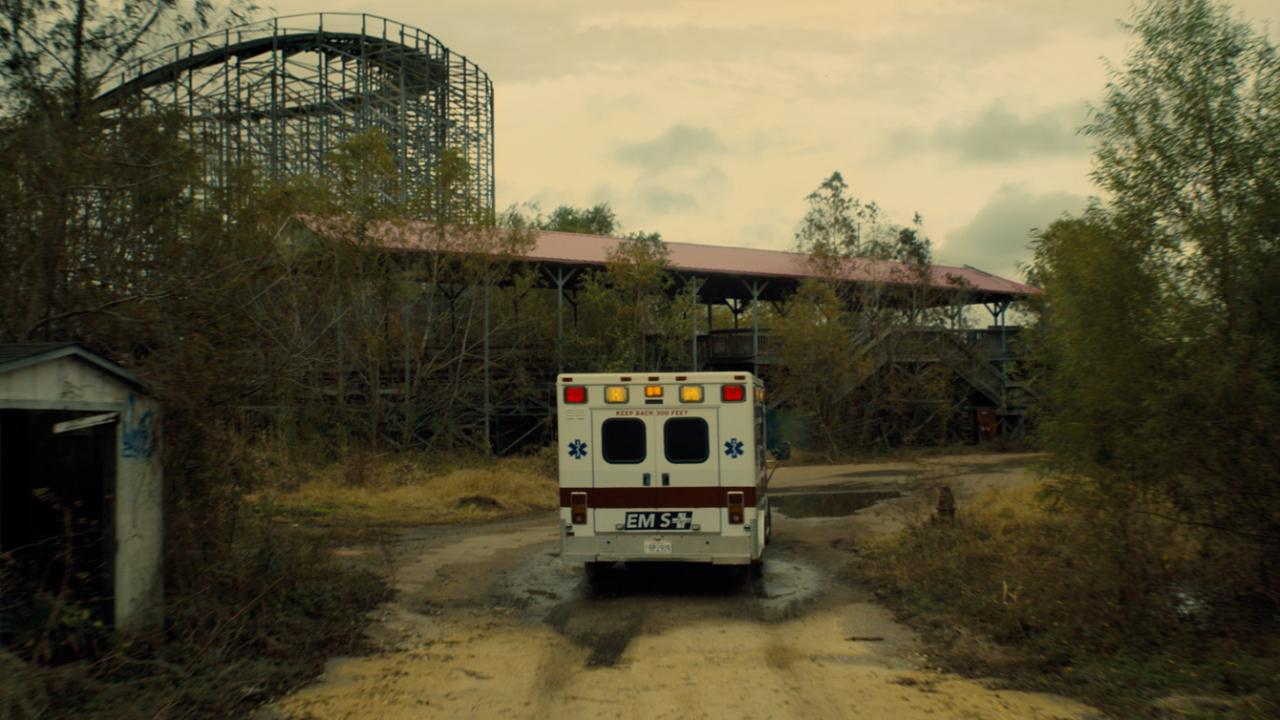A good sci-fi mindbender can be that much better with a little fourth grade explanation of its rules. Remember Bruce Willis’ quip in Looper about using drinking straws to represent timelines and arrows of causation in the paradox they found themselves in? He was on to something. Even though it was a joke, sometimes that’s the way to communicate what’s going on to us dummies out here in the audience, who like to have our minds bent but don’t want to fry our noodles along the way.
Synchronic contains such a promising metaphor. A scientist comes along at just the right time (as scientists do) to explain the way time moves in a circular, repeating fashion, meaning that all times exist simultaneously, and all you need to do is jump from one circle to the next. (With the help of a designer drug, the titular Synchronic.) See, explains this man, time is like a vinyl record, the grooves representing an ongoing circuit of apparent temporal linearity, and the drug is the needle, allowing you to decide what song you want to play.
This would be a lot cooler if anything else about the movie had such graspable logic. That’s the key with a good mind-blower, something like The Matrix, which prompts you to involuntarily imitate that movie’s star by blurting out “Whoa!” at some point. The record analogy is the closest Synchronic gets. The rest of the time it’s more “What?” and “Why?,” when it should be “Whoa!” and “Why not?”
The story follows a pair of paramedics, family man Dennis (Jamie Dornan) and ladies man Steve (Anthony Mackie), who are world weary enough (or maybe just tired of their night shift) to address potentially fatal injuries with the kind of lackadaisical remove of an embittered private detective. Their usual assortment of domestic incidents and overdoses get spiced up one evening when they find a man with a chest injury that looks as though it might have been produced by a sword, as well as two others tweaking on Synchronic in the same house. The weapon is found jammed into the wall behind the door, and it’s black and ornate and deadly, seeming to have been wrought in ancient fires.
Word gets out that while you’re on Synchronic, you can literally travel to other time periods, as recently as the last few decades and as far as 40,000 year in the past. The drug, you see, affects the pineal gland, which controls a person’s perception of time, and I guess, also, their physical presence in other time periods. So during your seven minutes back in conquistador times, you’re actually in harm’s way and better hope you return without a knife through the chest, or worse.
When they find a victim who looks like she spontaneously combusted, Steve starts to experiment with it – in part because he’s got terminal cancer and has nothing to lose, and in part because Dennis’ 20-year-old daughter has disappeared into one of the other grooves on this record. Young people, it turns out, have immature pineal glands and run the risk of being lost permanently.
Maybe we needed those straws after all. There’s something incomplete about this notion of time as a circle, since Synchronic users – quite a growing number of them, in fact – interact with people of the past without those interactions having any causal impact on the future. You can buy time being circular, in concept, but if those circles are discrete and don’t influence one another, a little of that meaning starts to slip away.
We’d be okay with some conceptual ambiguity, since a little mystery is good for the wonder. That’s where writer Justin Benson and his co-director Aaron Moorhead also misstep. In a film that is strangely paced throughout, Steve starts scientifically studying the drug in a dispassionate way that saps it of a good portion of its danger. Especially considering what we see happen to the people who have trifled with it – who seem unusually likely to materialise within striking range of some pissed off human – we’re given little reason to fear that Steve will return in one piece from his adventures, which he is documenting with a video camera. The arrival of the video camera actually signals the moment when a previously ominous and hard-won atmosphere gives way to something tedious and boring.
Then again, this movie has dipped in and out of boredom before then. The story is weirdly fixated on Dennis’ workaday complaints about his relationship with his wife Tara (Katie Aselton), who seems pretty great all told, and entirely too much dialogue is expended on the “sacrifices” of being married. How Benson and Moorhead thought this would speak to the rest of their story is unclear. Steve’s cancer has obvious relevance, as a protagonist living on borrowed time is poignant as hell. Dennis is just the opposite, a man who appears to have it all but regularly airs dissatisfactions that boil down to wishing he had slept with more women. A curious lack of desperation over the whereabouts of his daughter just worsens the taste in your mouth.
Benson and Moorhead wowed with their film The Endless a few years back, which similarly dealt with sci-fi existentialism, other dimensions, what have you. Its low budget roots were evident, but its passion and clear-headedness elevated it. Their technique has improved with their budget, as there’s a lot done with camera placement, camera movement and smash cuts, giving Synchronic a real electricity from purely a filmmaking standpoint. (Moorhead is also the director of photography.)
The story feels shuffled, though, and not in the ways a time travel movie is designed to feel shuffled. When certain scenes seem to be occurring non-chronologically, it plays more like a mistake than an intentional choice to toy with the narrative. But even the scenes that play in sequence have a strange staccato rhythm to them, as they alternate between driving up the stakes, and flat moments where a guy grouses about his rock star wife. Simply put, the whole thing is out of sync.
Synchronic is currently playing in cinemas.



